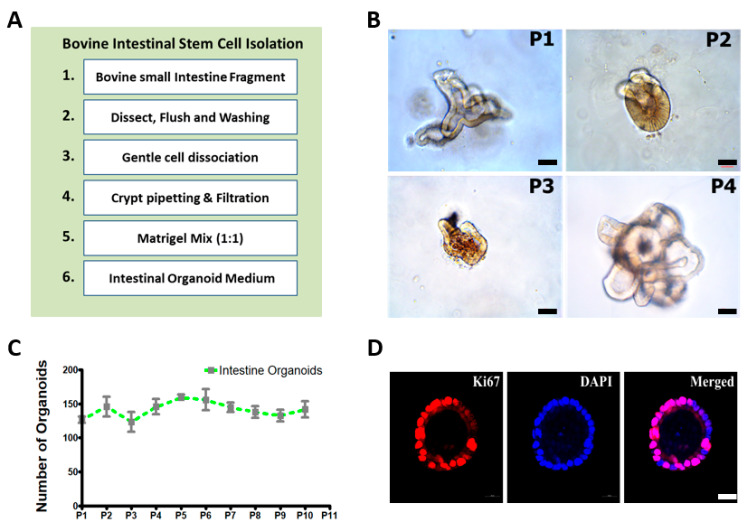Figure 1.
Isolation of intestinal crypts and three-dimensional (3D) cultivation of intestinal crypts including intestinal stem cells in bovine: (A) experimental procedures regarding the isolation of intestinal crypts from the small intestine and the three-dimensional (3D) cultivation of intestinal crypts including intestinal stem cells in bovine; (B) robust 3D expansion of intestinal crypts including bovine intestinal stem cells (P1–P4). The organoids can be spheroidal (round shaped), show budding (spheroids with extension), and have mature villi and crypt-like structures (branched structures). Scale bar: 50 μm; (C) growth rate graph of bovine intestinal organoids showing the number of organoids/well (mean n = 3 wells) growing in a 100 μL Matrigel dome in each well. Intestinal organoids were maintained for up to 10 generations without loss of the recapitulating capacity of crypts; (D) intestinal organoids were immunostained for Ki67 at passage 5, a marker of proliferating cells, and were counterstained with diamidino-2-phenylindole (DAPI). Scale bar: 20 μm.

